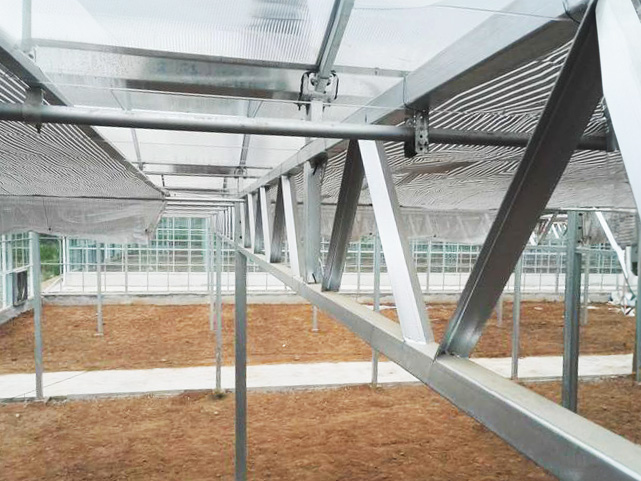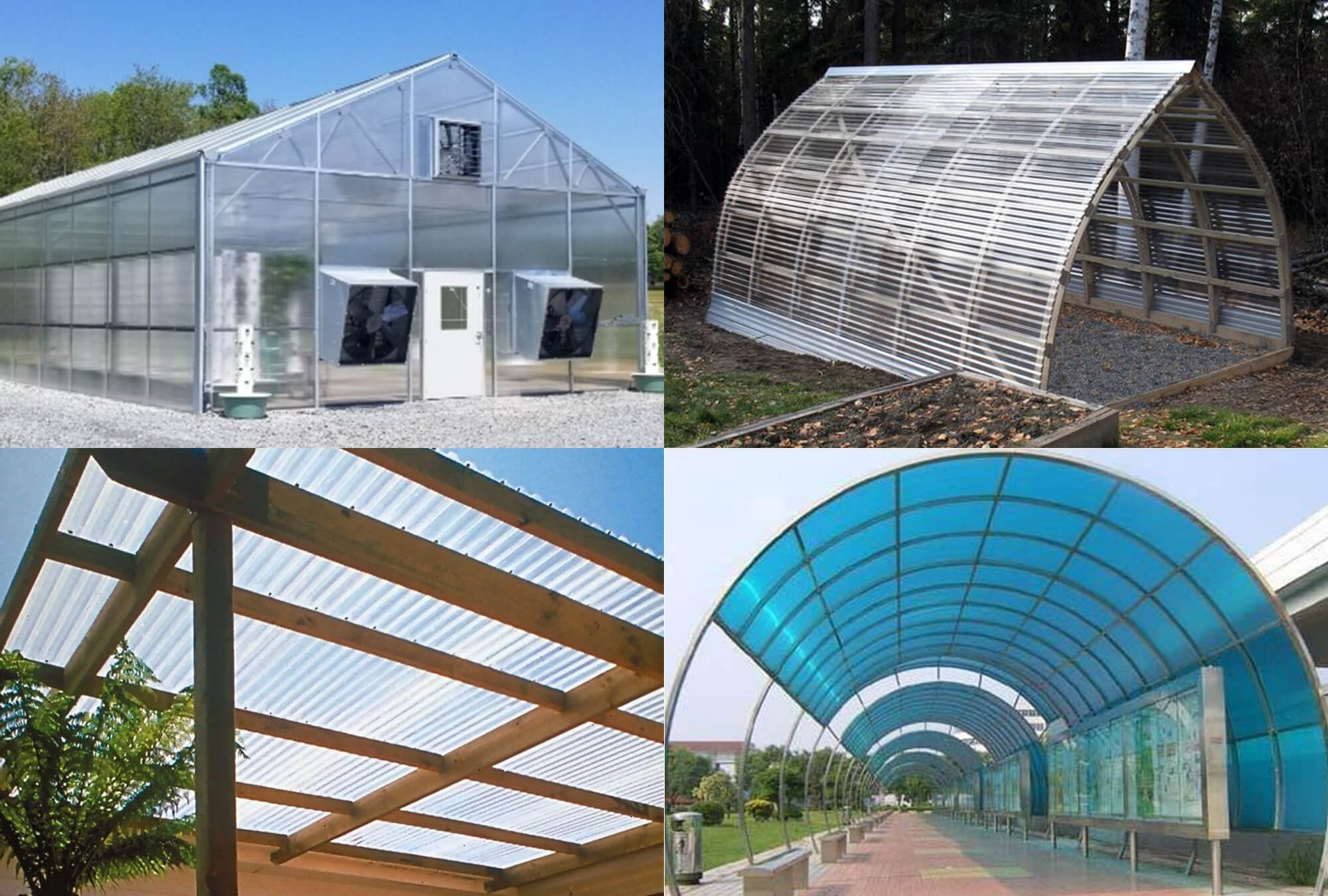Wind-Resistant Greenhouses: Guidelines for High Wind Areas!
Understanding Wind Threats to Greenhouse Structures
One of the main purposes of a greenhouse is to provide a controlled environment, or a safe haven if you will, to allow the cultivation of a variety of plants regardless of weather conditions and season. When designing wind–resistant greenhouses, it’s crucial to understand that aside from snow, wind could be said to be one of the most critical elements of weather that could cause irreversible damage to greenhouse properties, which makes wind threats an extremely important factor to understand and cope with.
Since greenhouse structures are mostly covered by large areas of glass or plastic glazing materials, some of which are inter-connected to span a large area, but are normally not built with as deep a foundation as your standard brick and mortar housing, creating wind–resistant greenhouses becomes quite a challenge.
Since each area has its own evaluation of wind effects and wind scale according to their own National Weather Service agency, it is hard to define “high wind conditions”; we would suggest using the Beaufort Wind Scale as reference. Typically speaking, Beaufort No. 7 (wind speed 51-61kph / 32-38Mph) and above is considered a high wind threat. During high wind, loose objects tend to blow around, smaller tree limbs and power lines could break, and create moderate threat to automobiles and boats on lakes.
| Beaufort Wind Scale | |||||
| Beaufort Number or Force | Wind Speed | Description | Effects Land / Sea | ||
| Mph | km/hr | knots | |||
| 0 | <1 | <1 | <1 | Calm | Still, calm air, smoke will rise vertically. Water is mirror-like |
| 1 | 1-3 | 1-5 | 1-3 | Light Air | Rising smoke drifts, wind vane is inactive.
Small ripples appear on water surface. |
| 2 | 4-7 | 6-11 | 4-6 | Light breeze | Leaves rustle, can feel wind on your face, wind vanes begin to move. small wavelets develop, cress are glassy. |
| 3 | 8-12 | 12-19 | 7-10 | Gentle Breeze | Leaves and small twigs move, light weight flags extend. Large wavelets, crests start to break. some whitecaps. |
| 4 | 13-18 | 20-28 | 11-16 | Moderate Breeze | Small branches move. raises dust leaves and paper. Small waves develop, becoming longer, whitecaps. |
| 5 | 19-25 | 29-38 | 17-21 | Fresh Breeze | Small trees sway. White crested wavelets (whitecaps) form, some spray. |
| 6 | 25-31 | 39-49 | 22-27 | Strong Breeze | Large tree branches move, telephone wires begin to “whistle”, umbrellas are difficult to keep under control. Larger waves form, whitecaps prevalent, spray. |
| 7 | 32-38 | 50-61 | 28-33 | Moderate or Near Cale | Large trees sway, becoming difficult to walk. Larger waves develop, white foam from breaking waves begins to be blown. |
| 8 | 39-46 | 62-74 | 34-40 | Gale or Fresh Gale | Twigs and small branches are broken from Gale or Fresh Gale
trees, walking is difficult. Moderately large waves with blown foam. |
| 9 | 47-54 | 75-88 | 41-47 | Strong Gale | Slight damage occurs to buildings, shingles are blown off of roofs. High waves (6 meters), rolling seas, dense foam, Blowing spray reduces visibility. |
| 10 | 55-63 | 89-102 | 48-55 | Whole Gale or Storm | Trees are broken or uprooted, building damage is considerable. Large waves (6-9 meters), overhanging crests, sea becomes white with foam, heavy rolling, reduced visibility. |
| 11 | 64-72 | 103-117 | 56-63 | Violent Storm | Extensive widespread damage. Large waves (9-14 meters), white foam, visibility further reduced. |
| 12 | 73+ | 118+ | 64+ | Hurricane | Extreme destruction, devastation. Large waves over 14 meters. air filled with foam, sea white with foam and driving spray.
little visibility. |
There are a couple of points to consider when building greehouses that can withstand high winds or extreme weather conditions.
8 Must-Know Factors for a Wind–Resistant Greenhouse
Building a greenhouse that can withstand harsh weather conditions requires careful planning and consideration of multiple factors. For those interested in wind–resistant greenhouses, we’ve compiled a comprehensive guide covering eight essential aspects. Let’s explore each factor in detail:
1. Location & Orientation
Location and orientation are very important and have to be carefully planned ahead, as once the construction starts, it is almost impossible to make any changes.
- A sheltered placement is likely the best choice in high wind areas. A location with natural windbreaks such as trees or hills will normally work; artificial windbreaks such as buildings, walls, or barriers are also good choices.
- Orientation is important in that when the smallest surface area is facing the prevailing wind direction, force exterted on the structure will be significantly reduced.
2. Foundation
Nothing beats a strong foundation, as it is the groundwork of a structure which provides stability and support and is a vital part of any building – essential for preventing damage and collapse.
- Typical methods of strengthening the foundation of greenhouses includes the use of strong anchors such as ground stakes, concrete footings or earth augers, all of which will hold greenhouse framing deep and securely to the ground. It is also common to use heavy concrete or block foundations to add weight, further stabilizing the structure and counter the uplifting by strong winds.
(Read more: How to Build a Green House? Expert Instructions and Insider Tips)
3. Structural Design
With the advancement of computer aided drawing and building technology, it is now possible to simulate and verify structural designs through trial and error in advance without having to actually build anything.
- Structural designs such as Domes or Quonset-style greenhouses use a lower, more streamlined profile which significantly reduces wind exposure, and are naturally wind-resistant.
- Adding diagonal bracing to the structure, especially on the roof and sidewalls also improves rigidity and helps the structure resist wind pressure.
- By including cross beams or more rafters between roof supports also increases strength against lateral wind forces or uplifting.
4. Frame Material
The structural designs aforementioned can also be enhanced by using strong and durable materials such as galvanized steel or aluminum. Other materials such as wood can be reinforced with steel inserts or by simply adding thickness. The strength of the structure can also be fined tuned using different thicknesses or designs.
- Galvanized Steel is a very common used material for structural builds and offer good corrosion resistance with the help of surface coatings such as zinc or weathering resistant paint coatings. Limited aesthetics and appearances coupled with localized rusting due to coating damage may be major drawbacks, though the rusting can be prevented with careful handling and regular maintenance.
- Aluminum is an excellent structural material in that is has excellent corrosion resistance properties, is aesthetically pleasing, eco-friendly and great design flexibility. Although steel is much stronger compared to aluminum, it is also more dense, meaning aluminum has a better strength to weight ratio. An aluminium structure that can support the same load as a steel structure will be bigger but weigh half as much. Although aluminum surfaces are more prone to scratches, it can easily be remedied by poweder coating or hard anodized treatments, to name a few.
- Wood is a great material of choice for structures, especially in areas where there is ample supply. It is a renewable, biodegradable resource which requires less processing and reduces costs. Timber frames are also aesthetically pleasing and come with different natural scents, and it’s thermal properties mean building energy efficiency is improved. It does have it’s drawbacks though as wood has lower fire resistance, more sensitive to moisture and a shorter cleaning and maintenance cycle compared to steel or aluminum.
5. Cladding Material
Since skylight cladding material takes up the majority of the greenhouse covered area, the strength it is able to provide, or in other words, the force that it is able to withstand, is of upmost importance. Polycarbonate or glass panels are definitely among the top of the recommended choices.
- Polycarbonate sheets are lightweight, strong, shatterproof, and provide exceptional impact resistance. Its light weight could be a double edged sword in that if the supporting structure isn’t designed to provide sufficient holding strength, or if incorrect fixings and methods are used, sheets could be ripped from its structure.
- Glass panels are also a good choice as its heavier weight will be able to withstand higher wind loads, but only under the premise that they are installed correctly on an equally strong structure.
- Secure fixings are very important to secure the skylight cladding material, insufficient fixing quantities or loosely fitted framing or covers will become a weak link and lead to damages.For optimal installation of polycarbonate panels in your wind-resistant greenhouses, using the right fasteners is crucial – they should be specifically designed for polycarbonate sheets to ensure both secure mounting and weather protection. To explore professional fastening solutions that can enhance your greenhouse’s durability against wind damage, check out our recommended polycarbonate roof fasteners at BDN Fasteners.
(Read more: Green House Roof Materials: Why Polycarbonate Is the Best?)
6. Ventilation & Doors
Any opening, such as doors or windows, should be closed or sealed when not in use, especially when the wind is high. Using reinforced doors or windows which are installed on reinforced hardware, such as hinges and latches, will further prevent them from blowing open and creating a point of entry.
7. Maintenance
Regular maintenance is the key to longevity, it is advised to periodically inspect the frame, fasteners, and covering materials for wear and tear, before and after storms. It is also important to periodically check for any repair gaps or looseness to ensure there are no loose elements that could become vulnerable during a wind event.
8. Size Considerations
Smaller greenhouses are typically better suited to withstand high winds due to their lower surface area. If possible, divide a large greenhouse into smaller sections for increased resilience.
By combining these strategies, a greenhouse in a high-wind area can be built to withstand even severe storms while protecting crops or plants.
Wind–Resistant Greenhouses: Building for Longevity
Constructing wind–resistant greenhouses requires careful attention to multiple factors, from initial planning to ongoing maintenance. A well-built greenhouse is more than just the sum of its parts – it’s about how these elements work together to create a structure that stands strong against challenging weather conditions. Remember, the durability of your greenhouse largely depends on the quality of components used and proper installation methods.
Whether you’re planning a new build or upgrading an existing structure, investing in high-quality materials and proper installation solutions will protect both your greenhouse and the valuable plants within. For more greenhouse construction tips and insights, visit our blog, or explore our specialized fastening solutions designed specifically for securing greenhouse panels.
Learn more about BDN Fasteners >>
Polycarbonate Roofing Fixing Instructions: 8 Roof Fixing Tips
Skylight Leaks When It Rains? Causes and Solutions for Sealing!
How to Install Plastic Corrugated Roofing? A Step-by-Step Guide!









